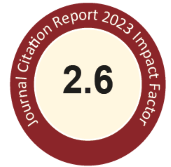Abstract
Salmonella enteritidis CCRC 10744 from the Culture Collection and Research Center (CCRC) and S. enteritidis strain SEP from a patient specimen, were used for the survival test in the salted duck egg and the thousand-year egg during processing and storage. After inoculation of S. enteritidis at levels of 50-100 CFU / egg yolk, the NaCl content of the egg yolk increased from 0.56% to 0.98% during processing of the salted egg. Similar growth curves were obtained for S. enteritidis CCRC 10744 and strain SEP. The viable cells increased to 10 7-10 8 CFU / g in the first 2 days and maintained 10 7 CFU / g by the end of the process. After processing, the salted eggs with S. enteritidis were stored at 25-30 °C. Five eggs were examined every month, and both strains were found in most of the eggs even after 2 months storage. Similar procedure was followed for the thousand-year egg. During processing period, the pH value of the yolk increased from 6.5 to 10.3. The changes of viable cell count in the thousand-year eggs were similar as those in the salted egg. However, due to the final alkaline pH of the egg yolk, the viable counts in the thousand-year egg decreased to about 10 6 CFU / g by the end of the process. After processing, the thousand-year eggs were also stored at 25-30°C. The viable cells of both strains decreased to roughly 10 5 CFU / g in the first month of storage. After 2 and 3 months' storage, S. enteritidis CCRC 10744 could still be found in 2 and 1 egg yolks of the 5 sampled eggs respectively, while strain SEP could be detected in all 5 eggs even after 2 or 3 months' storage.
Recommended Citation
Fu, Y.-M. and Su, T.
(1997)
"Survival of Salmonella enteritidis during the processing and storage of processed duck egg,"
Journal of Food and Drug Analysis: Vol. 5
:
Iss.
2
, Article 2.
Available at: https://doi.org/10.38212/2224-6614.2945

